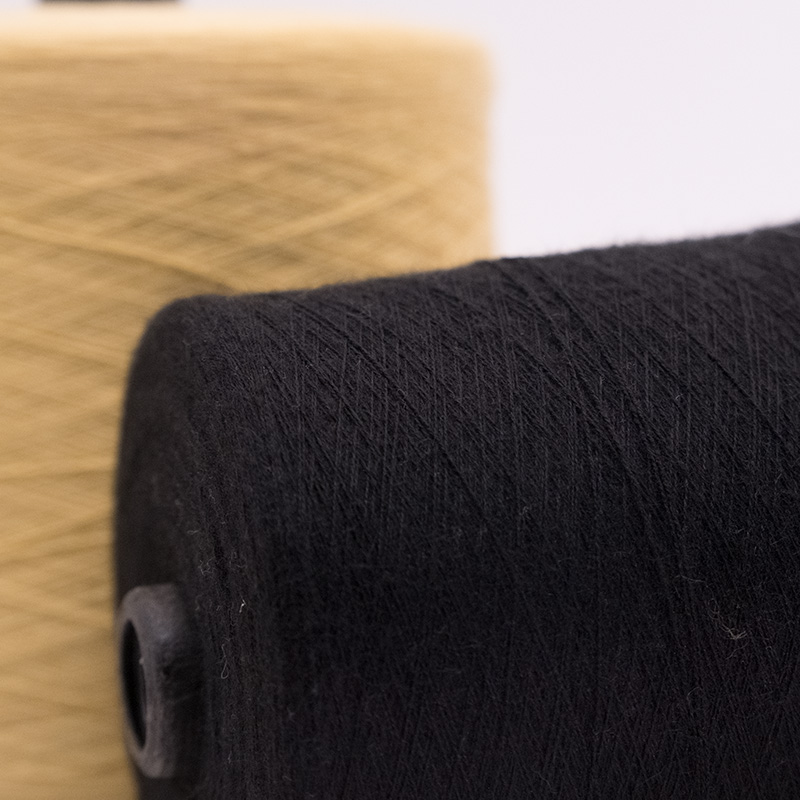The Best Fabric Finishes for Vortex-Spun Yarns: A Comprehensive Guide
2025-01-15
Vortex spinning has revolutionized the yarn industry by offering yarns with superior elasticity, softness, and a smoother handfeel. This method, which uses air turbulence to twist the fibers, results in a yarn that feels luxurious and performs well in high-end textiles. However, the true potential of vortex-spun yarns is realized only when they are paired with the right fabric finishes. The choice of finish can dramatically affect the look, feel, and performance of the final fabric. So, what fabric finishes work best for vortex-spun yarns? Let’s explore the options and why they shine in this context.
One of the primary reasons vortex-spun yarns are favored for high-end fabrics is their exceptional softness and elasticity. These qualities make them particularly well-suited for finishes that enhance comfort and luxurious appeal. For instance, fabrics made from vortex-spun yarns respond wonderfully to softening finishes, which not only accentuate the yarn’s inherent smoothness but also contribute to a plush, velvety texture. These finishes are commonly used in products like premium knitwear, high-quality jumpers, and luxury bedding, where softness against the skin is a key selling point. Softening agents, including silicone-based treatments, can further elevate the tactile experience, ensuring that garments made from vortex-spun yarn maintain their supple feel throughout their lifespan.
Another important finish that works harmoniously with vortex-spun yarn is anti-pilling treatment. Due to the yarn's elasticity, vortex-spun fibers resist breakage and fuzzing, making them less prone to pilling compared to other yarn types. However, adding an anti-pilling finish enhances this property and ensures the fabric maintains its pristine look over time. This is particularly crucial for garments that experience frequent wear, like sweaters and cardigans. Anti-pilling finishes can be applied through various methods, such as resin treatments, that coat the yarn and reduce the likelihood of fuzz formation. This treatment works especially well with the smooth, consistent yarn produced by vortex spinning, as it doesn’t interfere with the yarn's natural texture.
For fabrics that require more structure or durability, wrinkle-resistant finishes are also a perfect match for vortex-spun yarns. The twist structure created in vortex spinning gives the yarns a higher degree of elasticity, which, when combined with wrinkle-resistant treatments, results in fabrics that not only stay crisp and fresh-looking but also hold their shape over time. This is particularly beneficial for woven fabrics used in office wear, formal attire, or home furnishings, where a neat and polished appearance is desired. The wrinkle-resistant finish works by bonding the fibers in such a way that they resist creasing, yet it still allows the fabric to retain its natural softness and flexibility—two key benefits of vortex spinning.

Moreover, vortex-spun yarns are ideal for moisture-wicking finishes, especially when producing activewear or performance fabrics. The yarn’s smooth surface allows for the efficient transport of moisture away from the body, and when paired with a moisture-wicking treatment, these yarns create fabrics that are breathable and comfortable even in demanding environments. This makes vortex-spun yarns a top choice for sportswear manufacturers looking to create garments that combine luxury with function. The moisture-wicking finish works by enhancing the fabric’s ability to move sweat away from the skin and evaporate it quickly, keeping the wearer dry and comfortable.
Lastly, textural finishes like embossing or laser cutting can add a unique visual and tactile quality to vortex-spun yarns. Since vortex spinning creates a yarn with a smooth surface, it serves as an excellent base for techniques that involve shaping or embossing the fabric. These finishes are often used in fashion-forward applications, where fabric texture is an essential element of the design. Whether used for statement jackets, tailored dresses, or even luxury home decor, the ability to apply intricate patterns or three-dimensional textures to vortex-spun fabrics gives designers the creative flexibility they need without compromising the soft, elastic qualities of the yarn.
The best fabric finishes for vortex-spun yarns are those that highlight the yarn's inherent properties—softness, elasticity, and smoothness—while enhancing the overall feel and performance of the fabric. Softening agents, anti-pilling treatments, wrinkle resistance, moisture-wicking finishes, and textural treatments all complement the advantages of vortex-spun yarns. When paired with the right finish, vortex-spun fabrics not only meet high-performance standards but also provide a luxurious experience that appeals to a wide range of consumers, from sports enthusiasts to luxury fashion buyers. The combination of superior yarn quality and innovative finishes ensures that vortex-spun fabrics remain at the forefront of textile production.



 English
English русский
русский Español
Español 中文简体
中文简体

















